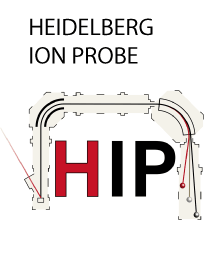Instrumentation
Cameca IMS 1280-HR
The IMS 1280-HR is a second-generation large magnet-radius SIMS instrument capable of analyzing positive or negative secondary ions at high sensitivity and spatial resolution. Ion sources are a duoplasmatron (producing positive and negative oxygen ions) and a Cs2CO3 source (thermally generating positive Cs ions). A normal-incidence electron gun is available for charge compensation during negative ion analysis of insulators. Samples and mounting materials cannot exceed 25.4 mm in diameter and 5 mm in height, and they must be ultrahigh vacuum compatible, have flat surfaces, and for insulators be coated with a conductive layer (mostly Au or C). New high precision sample holders permit reliable analysis within 8 mm from the center of the mount; targeting outside this “bulls-eye” area is not recommended. An eight sample airlock system allows for rapid change of samples. The sample surface is imaged by a reflected light microscope. Automated analysis is possible at stage position reproducibility of 2 µm. The large magnet radius (585 mm) enables high transmission with insignificant loss up to a mass resolution m/Δm of 6,000, and high mass resolution (m/Δm up to 30,000) over a total mass range of ca. 300 amu (i.e., from H to UO2). Multicollection using five moveable trolleys equipped with interchangeable electron multipliers (EM) and Faraday cups (FC) is possible from Li to U. Analysis spots are typically ~20 µm (Köhler mode for routine geochronology) and ~10 µm (stable isotope analysis using a focused Cs+ beam); smaller ion beams are tunable for special applications such as scanning ion imaging. The IMS 1280-HR also acts as an ion microscope which can image secondary ions emission from the sample surface by means of a channel plate, and a resistive anode encoder. Like its smaller (e.g., IMS 3F analogs, the IMS 1280-HR is also capable of depth profiling at 10’s of nm resolution. Routine geochronologic applications have a sensitivity (useful yield = ions detected over atoms removed) of 1% for Pb+ and reproducibility for Pb/U of 1-2% (1 standard deviation) that is equivalent to SHRIMP instrumentation. Uncertainties for routine stable isotope (e.g, C, O, S) analysis using FC detectors are ~0.2‰ (~0.6 ‰ with EMs).

HIP - Heidelberg Ion Probe: Cameca IMS 1280-HR

Primary ion source (Duoplasmatron on right, Cs-ion source on left) and primary ion mass filter

Eight sample airlock system

Sample chamber, electron gun and aperture drives to focus secondary ions

Electrostatic analyser (ESA, upper left) and magnet (upper right)

Detection unit



